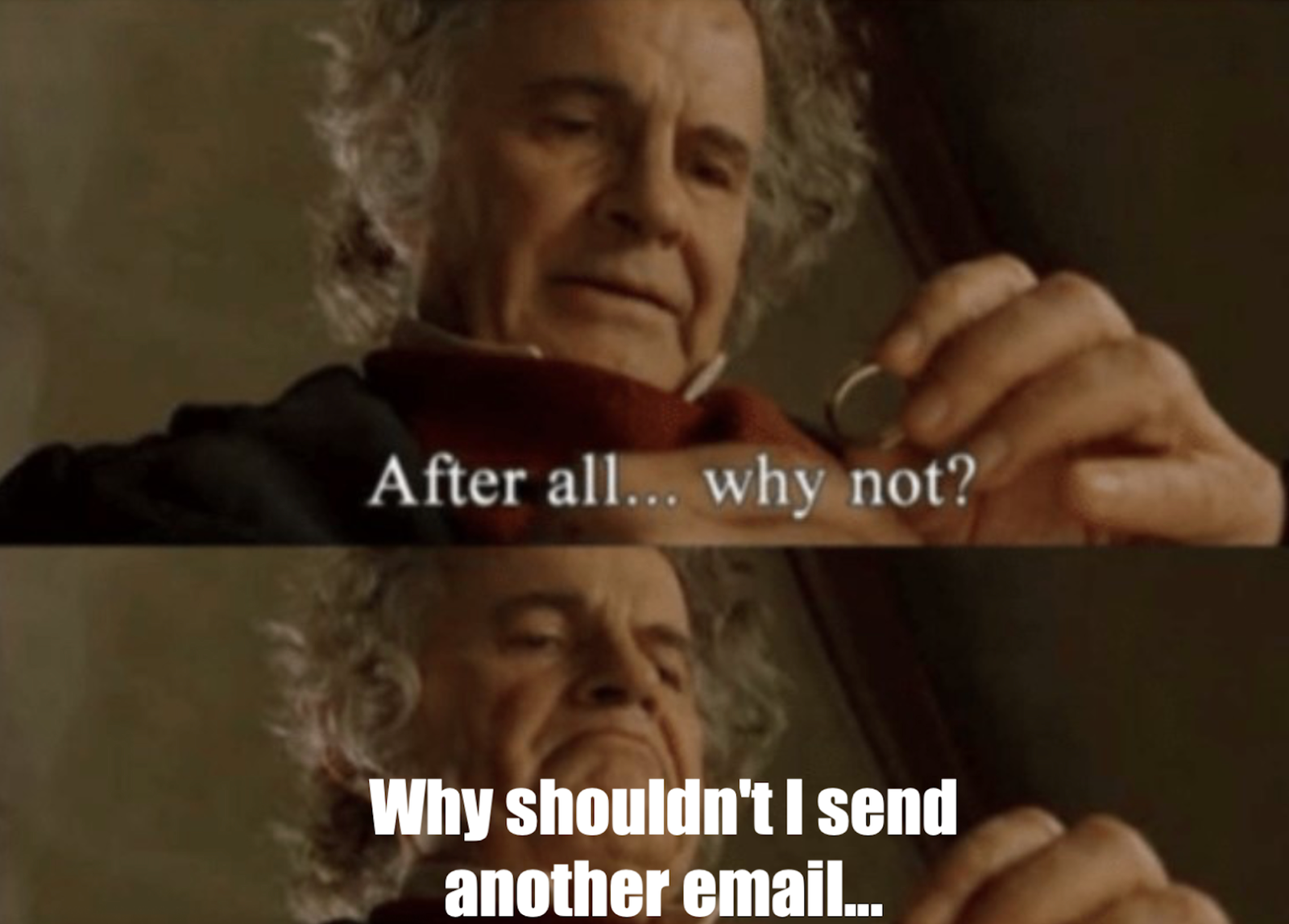Get In Touch
hello@untangld.co
Get In Touch
hello@untangld.co
Follow
|
LinkedIn

We use cookies to make sure you have the best experience on our website. Fear not, we don’t sell your data to third parties.



One must ask: Does this message enhance the consumer’s day, or does it simply add to the digital white noise? As we navigate the incessant promotions of the festive season, this email is a prime case study for examining the assumption that more contact is a easier path to value, than the effort required to creating a meaningful engagement.
Dissecting the Missed Opportunity
The Sainsbury’s email in question announced the premiere of their Christmas advert with a straightforward message. Yet, it failed to engage on several fronts.
Firstly, the email’s focus on the advert’s timing seemed to overlook the crucial aspect of aligning with the customer’s interests and daily realities. This reflects a wider issue in CRM: not every brand milestone is a customer milestone, and assuming otherwise can lead to messages that miss the mark.
Secondly, the email didn’t quite succeed in creating a compelling reason for engagement. While the announcement of a Christmas advert might have some appeal, it lacked an element of exclusivity or intrigue that could have transformed it from a routine notification into a captivating teaser. The opportunity to offer something unique, like a sneak peek or an insider view, was missed, underscoring the importance of providing value that resonates with the customer.
Lastly, the message fell into the trap of seeming impersonal. Despite having access to rich customer data, the communication felt generic, as if it were broadcast to a wide audience rather than tailored to individual preferences and histories. This highlights the need for using customer data not just to personalise content, but to make it relevant and engaging in a way that strengthens the customer-brand relationship.
The truth is that many CRM contact points, much like a significant number of advertisements, represent missed opportunities to strengthen brand identity and deliver genuine value. This perspective highlights the crucial nature of CRM interactions, which go far beyond being mere touch-points. They are, in fact, pivotal moments that significantly shape a brand’s perception in the minds of customers. Research by organisations like IPSOS supports this view, showing that a considerable number of CRM contact points fail to resonate with customers, often being poorly received or rapidly forgotten.
To steer clear of these common pitfalls, it is essential for brands to integrate core principles that transform CRM communications into valuable brand-building tools. The aim should be to ensure that each CRM initiative is not just a fleeting interaction but a step towards building a more substantial and rewarding relationship with the customer. To do this alway ask yourself three things:
1. What is the clear purpose?
Before creating numerous versions of a contact point, it’s vital to ask: What is the purpose of this interaction? The primary focus should be on why you are engaging the customer. This involves a deep understanding of the reason and objective behind the communication and a clear strategy on how success will be measured and achieved. If the purpose isn’t unmistakable, the communication risks being ineffective, potentially leading to customer disengagement or unsubscribes. The key is to ensure that every message sent out justifies the customer’s attention it demands, serving a defined goal that aligns with both the brand’s objectives and the customer’s interests.
2. How will you make them care?
David Abbott, renowned for his advertising wisdom, aptly said, “Shit that arrives at the speed of light is still shit.” This underscores the essential principle that speed and volume in communications should not eclipse their quality and relevance. Remember, just because someone should be interested in your message doesn’t automatically mean they will be. The key lies in how you deliver the message. The tone, language, and presentation of your communication play pivotal roles in its reception. Aligning these elements with your brand’s values and your audience’s preferences is essential. Such alignment not only garners attention but also strengthens the connection with your audience, increasing the likelihood of engagement and reducing the risk of irrelevance.
Generic messages fail to leverage the rich potential of first-party data. This type of data is invaluable for crafting interactions that are both personal and relevant. It’s about going beyond the generic and overused touch-points, such as birthdays or seasonal events, and diving into what makes your brand’s relationship with each customer unique. For instance, recognising individual shopping patterns or acknowledging significant personal milestones can create moments of meaningful engagement.
Brands need to explore the unique insights that only they possess about their customers. This could involve analysing purchasing behaviours, customer feedback, or interaction histories to unearth opportunities for creating compelling and memorable interactions. The focus should be on finding those unique aspects of your data that enable you to deliver messages that not only stand out but also resonate deeply with your customers. By doing so, you transform standard CRM communications into impactful and personalised experiences.
3. What happens next?
When planning CRM communications, always focus on what happens next. A clear purpose and compelling engagement are just the starting points. The real opportunity lies in guiding the customer towards an easy and logical next step. This involves making the transition from engagement to action as smooth as possible.
After capturing the customer’s interest, the next step should be evident and straightforward. Whether it’s signing up for something, taking advantage of a special offer, or exploring more content, the action required should be clear and simple to execute. The ease of this transition is critical – the less effort required, the more likely customers will follow through.
In essence, think about the customer’s journey as a continuous flow where each communication is a stepping stone to the next. This approach not only enhances the customer experience but also drives the effectiveness of your CRM strategy. By thoughtfully considering and facilitating the next step, you turn passive engagement into active participation and, ultimately, into meaningful customer actions.
In Conclusion
This season, as brands vie for attention with festive fanfare, consumers yearn for a respite. The lesson from Sainsbury’s email is clear: relevance and personalisation are not just buzzwords but the cornerstone of effective CRM. Brands that pause to reflect on the value of each communication will not only foster goodwill but will also pave the way for a loyal customer base that looks forward to every interaction.







